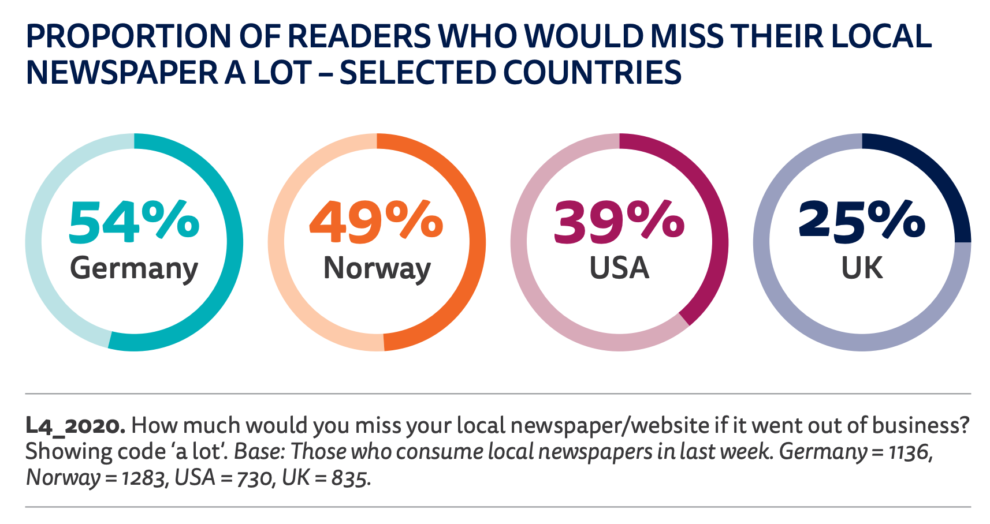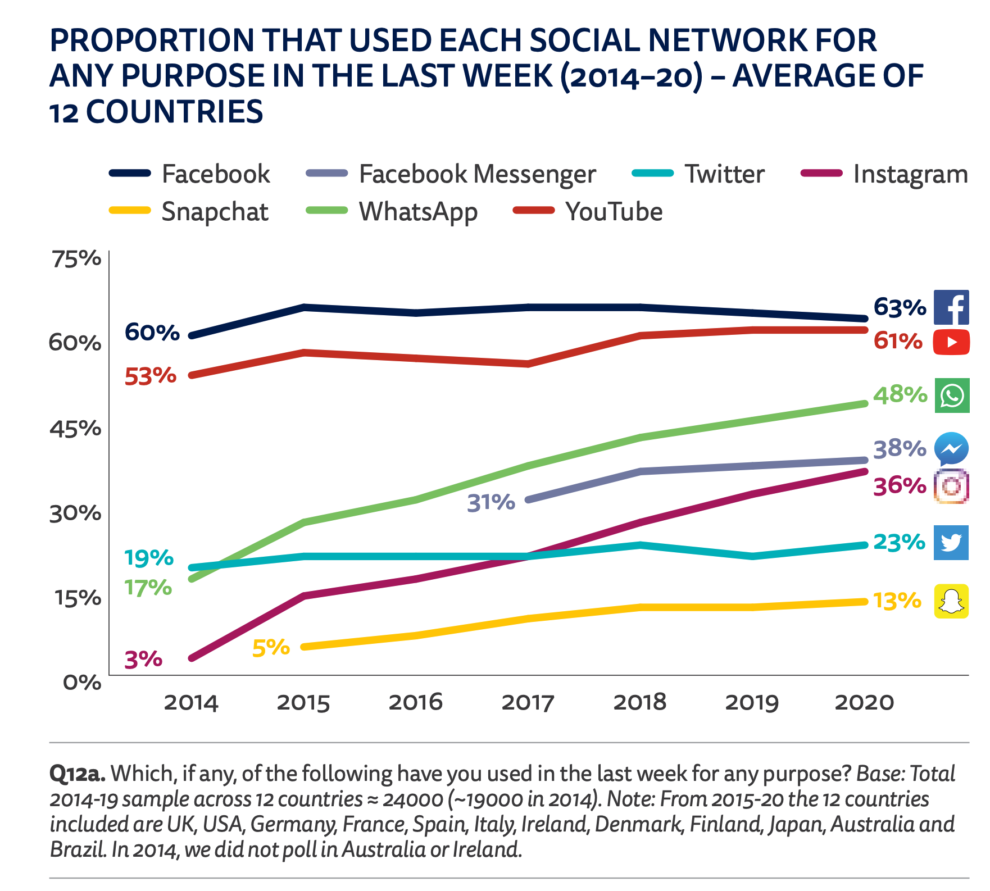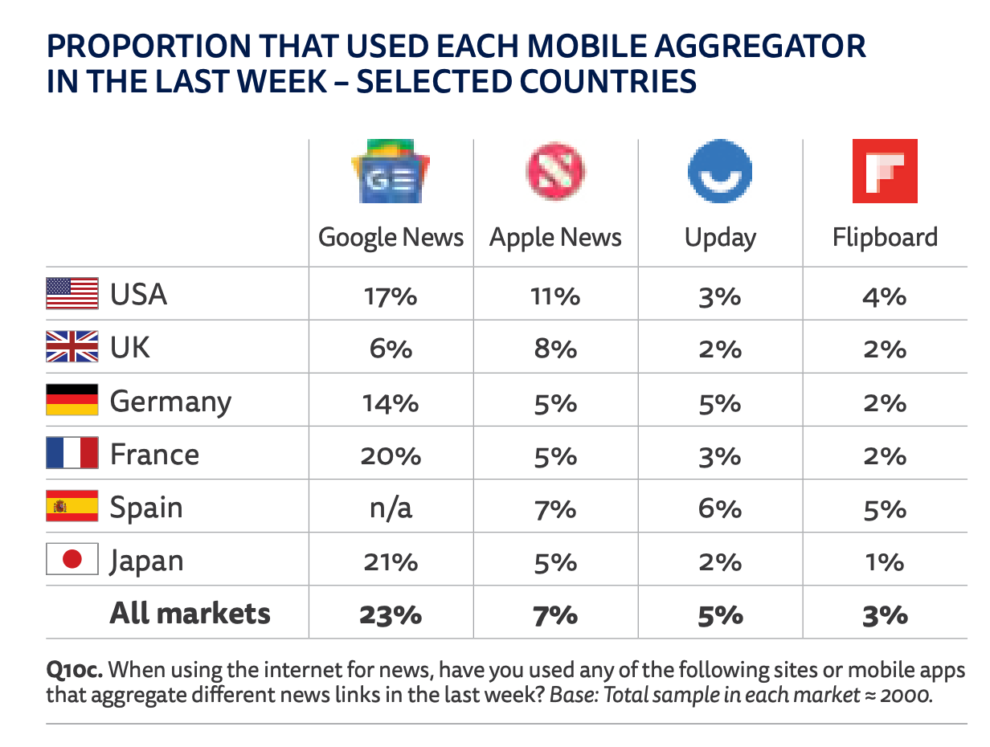5 graphs that will impact your digital strategy – Reuters Digital News Report 2020
Hot off the presses this week is the latest Digital News Report from Reuters, with insights from across the globe for publishers. Based on a survey of 80,000 digital news consumers in 40 markets, the 112-page report is full of actionable findings. We’ve boiled down the findings to the 5 key graphs that should shape the rest of your 2020 strategy and beyond.
1. Good news for subscription strategies
Let’s begin with some good news: even before the coronavirus subscription bump, publishers in many markets were showing a significant increase in the percentage of readers paying for online news. Stand-outs include the US where it jumped four percentage points and Norway which jumped eight points. Still, we would be remiss to not point out that questions have been raised about these figures — perhaps most notably by Markus Schöberl of pv digest last month.
While last year’s report warned that people who do pay for news are unlikely to pay for more than one source, the situation doesn’t look as dire this year. There has been a growing population of news consumers in certain countries that are now taking out more than just one subscription, often adding a local news source.
German publishers should be feeling especially positive from this year’s findings. Over half of German respondents who regularly read local newspapers say they would miss local newspapers ‘a lot’ if they were no longer there.

Some other interesting opportunities for publishers are also mentioned in the report, with readers saying they were more likely to subscribe if they could have one of these features:
- Family logins, such as for Netflix or Spotify
- Bundled subscriptions
- Ad-free experiences
- Recipe or crossword-specific subscriptions
2. Instagram and Whatsapp growing as news sources
While TikTok is still on the rise, the social media platforms that are growing the most in terms of news consumption are Instagram and Whatsapp. Across age groups, the use of Instagram for news had doubled since 2018 — looking likely to overtake Twitter as a source of news next year. Whatsapp on the other hand saw the biggest growth, with an increase of ten percentage points in some countries.

It is interesting to see how Facebook, which owns both Instagram and WhatsApp, has managed to stay relevant in the news space as the use of Facebook itself for news is on the decline. Both Instagram and WhatsApp were clearly designed from the beginning for mobile usage, which has helped them to grow within the younger populations.
3. Limited growth on mobile aggregator usage
Referral traffic from mobile aggregators seems to have held pretty steady, with global access remaining at around 7%. In some countries there is more significant usage, particularly in South Korea and Japan. In Japan the big aggregators are Line News (22% usage) and Gunosy (12% usage) while in South Korea, Kakao Channel is most popular (25% usage). One aggregator, TopBuzz, is now being closed down as it failed to break through in western countries.

It appears Apple News+ has also failed to break through outside of the US. When it first launched in North America last year, we saw a lot of skepticism from publishers. This skepticism had only increased by the time Apple News+ was launched in Europe in the fall. It is interesting to see readers are also skeptical of the platform.
4. Still need to educate readers on regi-walls
The New York Times started a buzz last year when they started using a ‘registration wall‘. By requiring users to create a free account to access content, they were able to better convert new subscribers. Since then we’ve seen more and more publishers adopt regi-walls, however the report states there is still work to be done on the reader side.
In our industry, many see the trade of an email address for access to content as fair. After all, the other option is to give an email address and credit card information! However readers are still wary about this: globally less than half of news consumers think it is a fair trade.

Still, readers are not strongly opposed either. Around a quarter of readers are unsure about the proposition, indicating that readers are missing the context of why publishers are asking for email addresses in the first place. It is easy in the industry to think everyone is aware of the state of journalism today, but there are serious misconceptions about the business of news still lingering in many populations.
5. Email is key for creating direct reader relationships and habits
Finally, the report explores the use of email by publishers in depth. As they have been burned by other platforms in the past, more and more publishers are understanding the importance of developing direct reader relationships on their own platforms. Email has become a crucial tool in the effort to convert new subscribers.
Readers are also responding positively to the growth of news emails, with the US standing out for one in five non-paying readers accessing a news email weekly. Interestingly, while the Nordics usually stand out for being on the cutting edge of news innovation, email seems to be a missed opportunity for many Nordic publishers. In Norway, just 9% of non-paying readers access news emails weekly.

The most popular type of news email is the daily update, accounting for 60% of news emails. Interestingly the report explains that this format is well received by both news lovers as well as daily briefers — those readers that want to be updated on the news a few times during the day. The explanation for why this product is so successful echos the positive attributes of editions as well: simplicity, finish-ability, curation, and serendipity.
Furthermore, while the inbox is increasingly crowded with more newsletters being started all the time, the good news is that many of these emails are actually getting read. Globally, close to half (44%) of all respondents say they do read most of their news emails. Those readers that do engage heavily with email are also more valuable for publishers, as they tend to be more interested in news and have more disposable income.
As more and more publishers explore how they can increase reader frequency, email stands out for its strength in building habit with news products. That’s one reason why publishers such as The Wall Street Journal and The Financial Times encourage new subscribers to register for email newsletters in their first few weeks, as the data show this increases engagement and ultimately reduces churn.
However email is but one tool in creating reader habits. There have been great experiments run by publishers across the globe, and a clear consensus of best practices for habit-forming news products is developing. We will be exploring this topic in-depth in our new webinar next month. Make sure to register to save your spot today and subscribe to hear about our future webinars.
Other Blog Posts

Stay on top of the game
Join our community of industry leaders. Get insights, best practices, case studies, and access to our events.
"(Required)" indicates required fields

